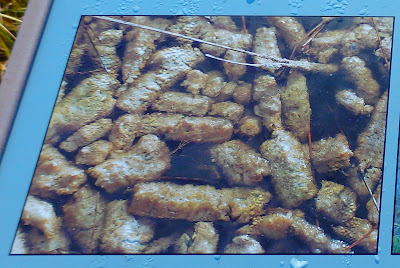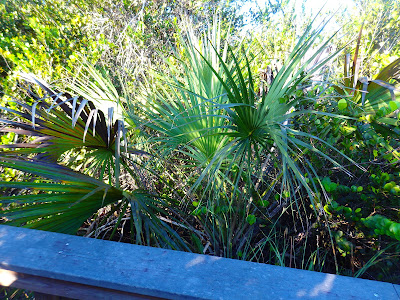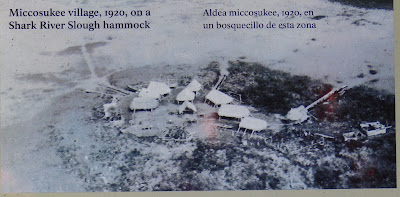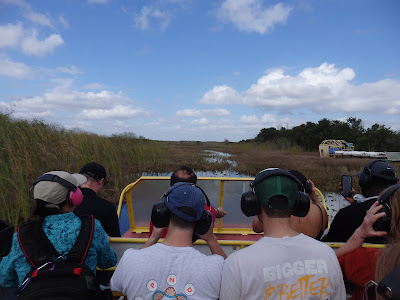 |
| The name Shark Valley comes from the area in the Gulf of Mexico known as Shark River, where the water in the Everglades flows, |
 |
| We started walking on a paved trail then got off on this boardwalk. |
 |
| Caught this gar swimming by in the water. |
 |
| Here our guide is pulling up some sawgrass to demonstrate how you can chew of the inner layer to get water. |
 |
| Why do I always get butt shots? |
 |
| Baby gater sunning. |
 |
| Momma was soaking up the rays nearby. |
 |
| Yep, I don't want to mess with those teeth. |
 |
| On the Otter Cave Hammock Trail. |
 |
| A few people slipped off the branches going through this boggy area and really got their shoes dirty |
 |
| Wouldn't want to grab these sticky pods. |
 |
| Solution hole |
 |
| This Wood Stork with a broken toe was sitting alongside a pool of water. Yes it looks like it has backward knees but those are actually its ankles. |
 |
| The pool also contained two alligators. Since it was morning and the alligators were too cold to move, the wood stork was unconcerned by their presents. Actually the humans didn't seem to bother it either. |
 |
| I recommend reading the following website to see how alligators are beneficial to the Everglades environment. https://www.indefenseofplants.com/blog/2020/4/28/alligators-increase-plant-diversity |
 |
| Black racer |
 |
| There are at least six baby gaters in this photo |
 |
| Blue Egret |
 |
| At this point we headed back to the van and had a snack and drinks before loading up and traveling across the road to get on an airboat. |
 |
| There were two boats at the dock. This one was two small for the 17 of us. |
 |
| So we got on this one with plenty of room to spare. |
 |
| We scared up some birds. There's one flying over the right side of this grass hump. |
 |
| Our guide, Elvis, is a Miccosukee with a son that wants to go to the University of Iowa because of its wrestling program. |
 |
| Sewing machines abandoned by the departing Miccosukee are arranged in an artful manner |
 |
| Elvis led us further back on the hammock to show us where the momma gater was sitting in the sun. |
 |
| View from the pier at the hammock. |
 |
| Back out on the water we scared up some more birds. Sorry the following video doesn't show some of the turns Elvis made. |
 |
| Coming up to another formerly occupied hammock. |
 |
| Elvis swiveled the boat around so everyone could get a look at this gater. |



















































No comments:
Post a Comment